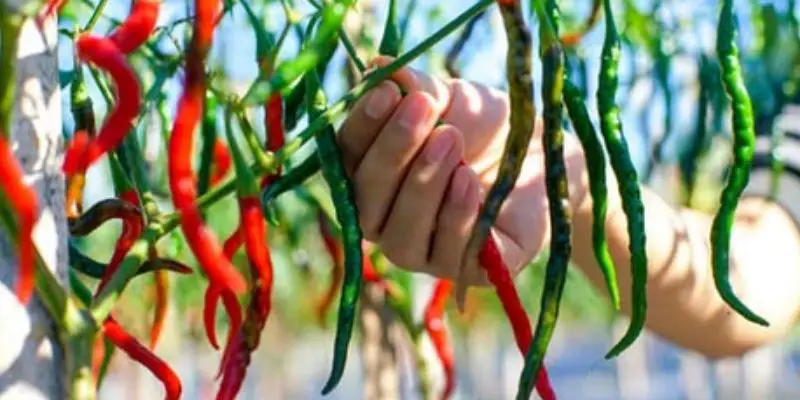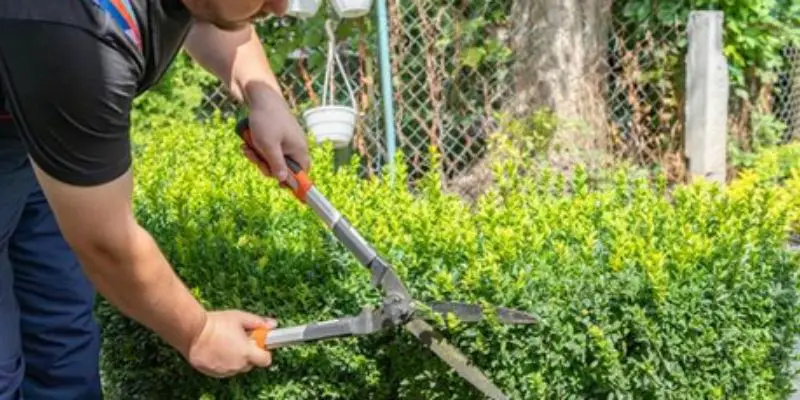Pepper plants produce an abundance of delicious, nutritious fruit perfect for everything from fresh salads to roasted veggie sides when cared for properly. Left unchecked, sprawling pepper plants soon grow wildly out of control. Learning how to trim pepper plants keeps the plants tidy, healthy, and maximizes yields.
This in-depth pepper trimming guide covers ideal timing, essential tools, specific pruning methods, cleanup steps, and aftercare for maintaining robust plants. Follow key shaping guidelines renewing overgrown specimens into vigorously fruiting peppers again. Soon you’ll enjoy a bountiful harvest on neatly trimmed plants!
When to Trim Pepper Plants
Knowing optimal timing is crucial when learning how to effectively trim pepper plants. Pruning at the wrong time negatively impacts plant health and fruit production.
The best time for trimming most pepper varieties is during late winter or very early spring before new growth resumes. Alternatively, trim immediately after final harvest leaving time for any last fruits to fully ripen before first frost.
Trimming when peppers are fully dormant results in less sap bleeding from cut stems. It also reduces the chance of diseases or insects attacking freshly cut areas during vulnerable growth stages. Well-timed pruning invigorates plants as weather warms.
Tools for Trimming Pepper Plants
In addition to timing properly, having the right tools makes pepper plant maintenance easier. Invest in quality tools designed explicitly for carefully pruning vegetables retaining sharp blades through repeated use.
Here are the best tools for trimming pepper plants:
- Bypass Hand Pruners – Essential for accurately snipping smaller stems and detail pruning work. Look for stainless curved blades.
- Bypass Loppers – Long handles provide better leverage powering through thicker stems hand pruners cannot handle.
- Pole Pruners – Pole pruners extend your reach when pruning tall, mature pepper plants from the ground.
- Sharpening Stone – Keep blades razor sharp for clean cuts that heal rapidly without crushing damage.
- Disinfectant Spray – Sterilize tools between plants preventing transmission of bacterial or fungal diseases through open wounds.
How to Trim Pepper Plants Properly
Learning exact branch selection and placement of cuts is equally as important as timing when maintaining healthy, prolific peppers. Follow these guidelines to encourage plant vigor and fruit production:
- Remove low-hanging, excessive foliage to improve air circulation reducing disease vulnerability.
- Thin dense interior growth allowing better sunlight exposure deeper inside plants.
- Cut back leggy main leaders by one-third redirecting energy into side shoot development.
- Prune plants to 2-3 main productive stems to focus ripening energy instead of excessive vegetation.
By thoughtfully removing unproductive shoots while strategically heading back leaders, plants remain compact without excess foliage competing for resources. Avoid removing over one-quarter of total growth during routine annual pruning sessions.
Rejuvenating Overgrown Pepper Plants
In addition to regular light pruning, substantial corrective cutting periodically reinvigorates overgrown neglected pepper plants declining in productivity. Severe hacking removes old wood stimulating new replacement growth and fruiting branches.
Follow this straightforward 4-step process when rehabilitating an overgrown pepper plant:
- Remove selected inward-facing branches and dense secondary shoots first.
- Thin remaining interior branches to reduce crown density improving light penetration.
- Head cut back over-long outer branches to induce shorter productive side shoots.
- Cut main leaders down to 12-15 inches triggering vigorous new growth.
Although it leaves plants appearing sparse temporarily until regrowth fills back in, this systematic approach transforms the most unkempt, wild peppers back into orderly fruiting machines.
Aftercare for Pruned Pepper Plants
The final key for maintaining healthy, robust pepper plants after pruning involves proper aftercare allowing recovery. Thoughtful care while new foliage establishes prevents setbacks and decline.
Follow these vital aftercare tips:
- Clean tools thoroughly after each cut to prevent disease spread. Sterilize equipment using a diluted bleach solution.
- Water deeply after pruning to avoid additional stress. Continue consistent weekly deep watering as plants reestablish.
- Check for pests like aphids and diseases following pruning when plants are most vulnerable.
- Stake and tie main leaders providing stability until stronger stems develop on newer growth.
- Delay any repeat heavy corrective pruning for at least 1-2 seasons allowing plants to fully recover vigor before cutting substantially again.
With attentive aftercare, even severely pruned peppers make strong comebacks!
Conclusion
Learning proper techniques makes pruning pepper plants far less intimidating. Follow timing recommendations based on the fruiting cycle to avoid accidentally sacrificing yields through improper cutting. Always sterilize tools after each use to prevent spreading diseases through unclean blades.
Taking time to strategically remove unproductive wood and dense branching results in plants with excellent air circulation and ample light exposure – ideal conditions for bountiful harvests! Soon you’ll tackle trimming your overgrown pepper patch back into a tidy and prolific state.
Reclaim order and prime fruiting conditions through attentive pruning when pepper plants become a tangled mess.
FAQs on How to Trim Pepper Plants
Q: Should all pepper varieties be pruned the same way?
A: Pruning techniques generally apply to most common peppers. However, super hots may require less aggressive pruning as they grow slower and remain more compact.
Q: Can you cut back pepper plants drastically?
A: Yes, mature pepper plants respond well to periodic severe pruning for complete rejuvenation removing up to 75% of total foliage.
Q: How much should pepper plants be pruned annually?
A: For routine maintenance, limit pruning to removing just 10-25% of top growth, inward facing branches and secondary shoots annually.
Q: How soon after transplanting can pepper seedlings be pruned?
A: Wait until young plants become established with 6-8 leaves before doing any light pruning. Avoid stressing recently transplanted peppers.
Q: Can pruning benefit container grown pepper plants?
A: Absolutely! Pruning contains sprawling growth keeping compact plants healthy and highly productive even in limited pot volumes.

Michael Glenn is a certified arborist and horticultural expert with over 15 years of experience in the landscape industry. His passion for plants and trees has led him to become a sought-after authority on pruning and trimming techniques. Glenn’s in-depth knowledge of proper pruning methods, timing, and tools has helped countless homeowners and professionals maintain healthy, aesthetically pleasing gardens and landscapes.
In addition to sharing his pruning expertise through practical tips, step-by-step guides, and expert advice, Glenn is also a respected author of pruning tool buying guides. His comprehensive reviews and comparisons ensure readers can make informed decisions when investing in quality loppers, pruning shears, saws, and other essential equipment. With a deep understanding of plant biology and sustainable practices, Glenn’s writing empowers audiences with the knowledge needed to properly care for green spaces.





